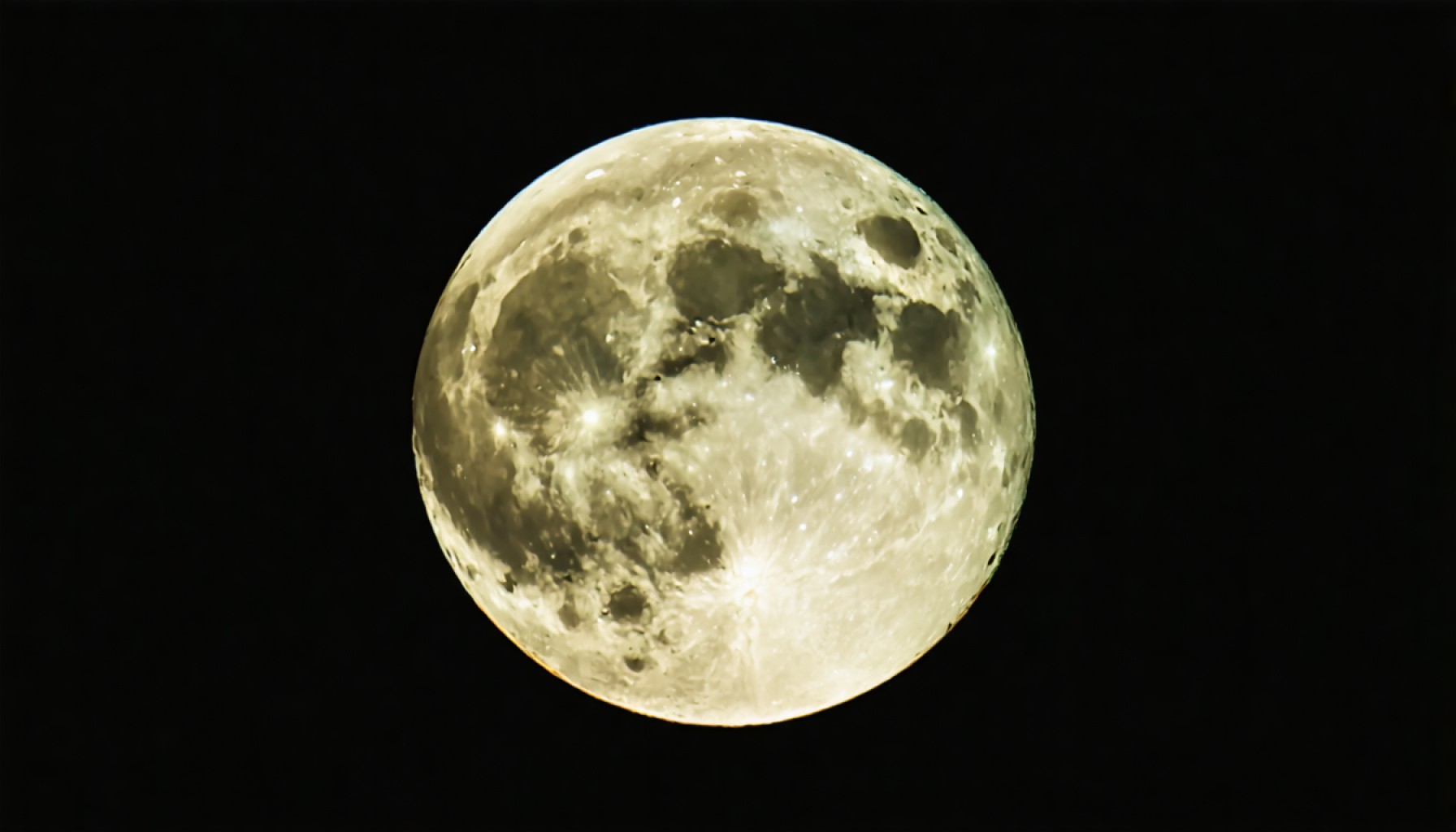- This weekend features a unique celestial event: a micromoon, where the moon appears slightly smaller and dimmer.
- A micromoon occurs when the moon is at its apogee, the farthest point in its elliptical orbit from Earth.
- The phenomenon contrasts with a supermoon, when the moon appears larger and brighter.
- The micromoon will be visible at approximately 7:23 p.m. in Chicago, requiring only a clear sky and patience to observe.
- Skywatchers can enjoy this rare event and reflect on the moon’s role in the cosmic ballet.
- Another micromoon won’t occur until May 12 next year, offering a reminder of the vast beauty of space.
This weekend, the moon adorns the night sky with a subtle twist—appearing slightly smaller and dimmer than usual. This celestial magic occurs due to an astronomical phenomenon known as a micromoon, which only graces us three times this year. Imagine the moon gently tiptoeing away from Earth, reaching what astronomers call its apogee—the farthest point in its elliptical orbit. This cosmic distancing act is what makes the moon shrink in our sky, akin to watching a distant ship slowly drift out to sea.
While this celestial ballet might elude untrained eyes, those with a keen gaze will notice the slight reduction in the moon’s size and brightness. The micromoon stands in contrast to the dramatic supermoon, when the moon cozy-ups, turning larger and more luminous.
For those eager to witness the micromoon’s delicate dance, simply gaze upwards at around 7:23 p.m. if you’re in Chicago, where it will make its modest debut on the Saturday night stage. No special equipment is needed—just find a clear patch of sky unmarred by city lights or clouds and let your eyes adjust to the nocturnal canvas.
For skywatchers, this weekend provides a unique opportunity to appreciate the moon’s quiet elegance. By understanding such nuances, we find ourselves more connected to the rhythms of our universe, perceiving the moon not just as a steadfast nocturnal companion but as an active participant in cosmic choreography.
You’ll have to be patient for another such spectacle; the next micromoon won’t grace the skies until May 12 of next year. As we turn our eyes skyward, let us relish these fleeting moments that remind us of space’s vast beauty and our small place within it.
Why You Shouldn’t Miss the Weekend’s Micromoon: What You Need to Know
Understanding the Micromoon Phenomenon
The term micromoon describes the appearance of the Moon when it is at its apogee, the farthest point in its elliptical orbit around Earth. During this time, the Moon appears approximately 14% smaller and 30% dimmer than when it is at its closest approach, known as a supermoon. This effect is subtle but noticeable to avid skywatchers.
How to Maximize Your Micromoon Experience
1. Optimal Viewing Conditions: Find a location with minimal light pollution. The darker your surroundings, the more distinct the micromoon will appear in the sky. Rural areas or elevated places like hills and fields are ideal.
2. Timing Matters: For the best view, plan your observation around 7:23 p.m. if you’re in the Chicago area—or adjust accordingly based on your time zone relative to CST.
3. No Equipment Needed: While telescopes or binoculars can enhance the view, the micromoon is visible to the naked eye. Allow your eyes 15-30 minutes to adjust to the dark for optimal clarity.
4. Complement Your Experience: Pair your skywatching with an astronomy app to explore more about the Moon’s phases and its position in the sky. Apps like SkyView or Star Walk can enrich your viewing with augmented reality.
Real-World Use Cases and Key Insights
– Star Parties and Public Observations: Astronomy clubs often organize gatherings during such celestial events. These gatherings offer educational opportunities to learn more about astronomy with the help of expert demonstrations.
– Impact on Tides: While supermoons are known for causing higher tides, micromoons have the opposite effect, slightly lessening tidal forces. Understanding these tide variations can be beneficial for marine navigation and coastal planning.
Market Forecasts & Trends in Astronomy
– The growing interest in space observation is leading to increased sales of telescopes and binoculars. Market research indicates that the global amateur astronomy equipment market is expected to grow steadily over the next decade.
Controversies & Limitations
– Visibility Issues: Weather conditions such as clouds and fog can obstruct viewing of the micromoon. Checking weather forecasts before planning your observation night can help mitigate this issue.
– Misinterpretation of Size Difference: Without a point of reference, the size change might not be discernible to casual observers, sometimes leading to debates about its actual noticeable impact.
Quick Tips for Enhanced Star Gazing
– Dress warmly, especially in cooler climates, to stay focused and comfortable.
– Bring a reclining chair for a more relaxed viewing experience.
– Consider photography to document the occurrence; using a camera with a long exposure setting can capture the event beautifully.
Conclusion: Embrace the Cosmic Dance
By engaging in these events, we draw closer to understanding our universe. The spectacle of the micromoon reminds us of the cosmic choreography we are all a part of, encouraging us to take a moment away from our busy lives and appreciate the beauty and vastness of space.
For further exploration into astronomy and celestial events, you can visit NASA’s official site, providing educational resources and the latest updates on astronomical phenomena.
